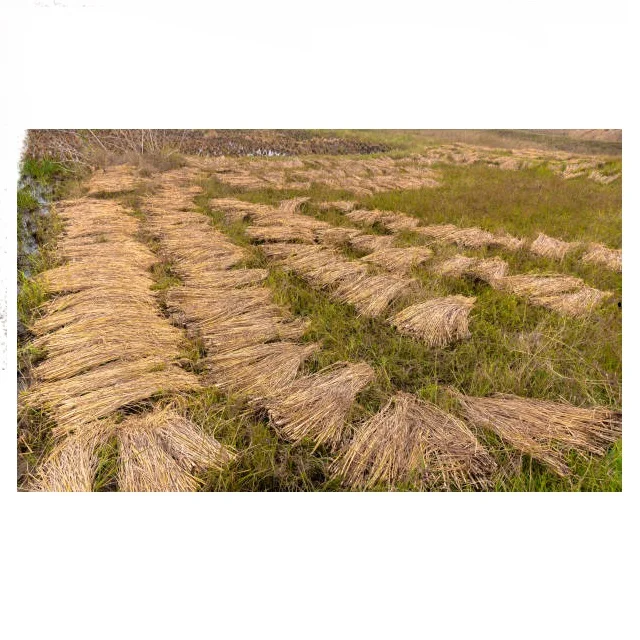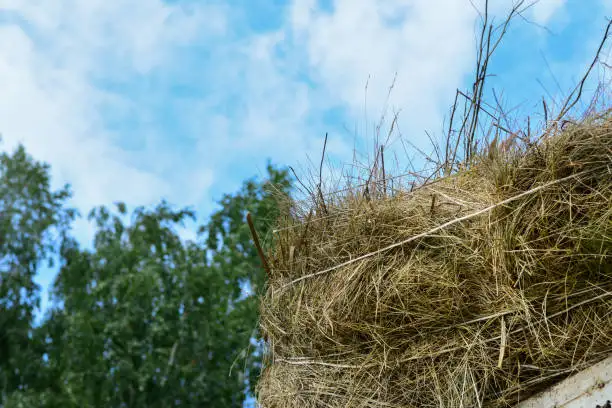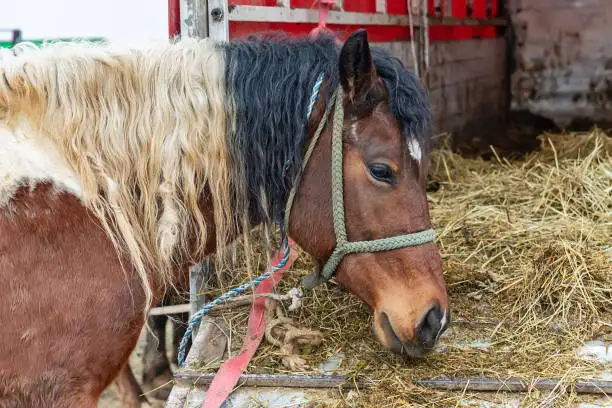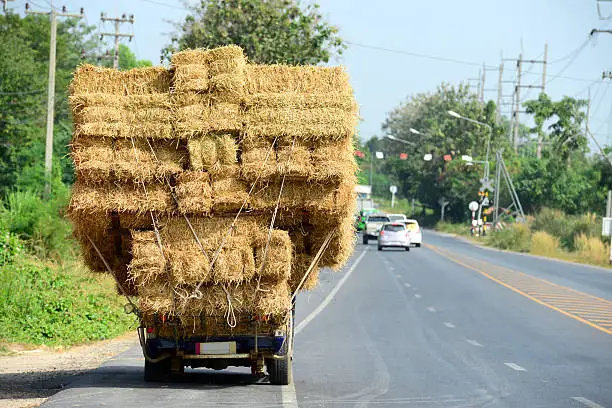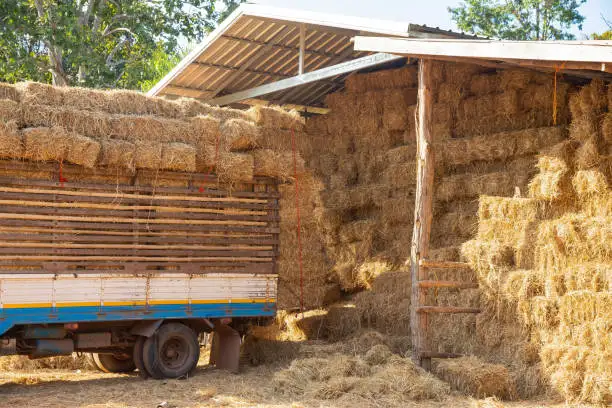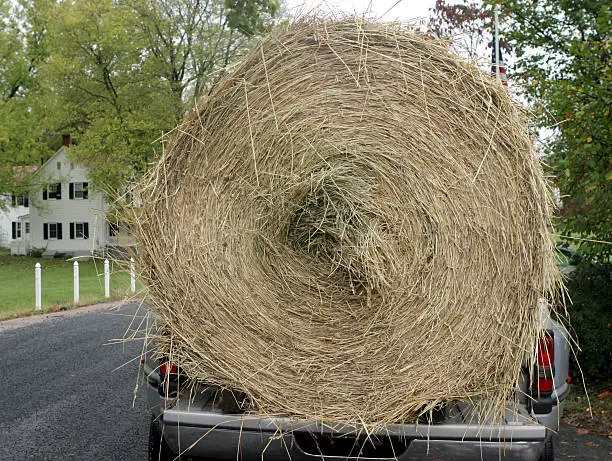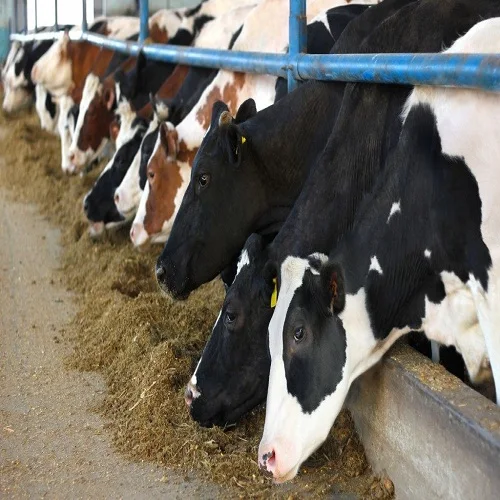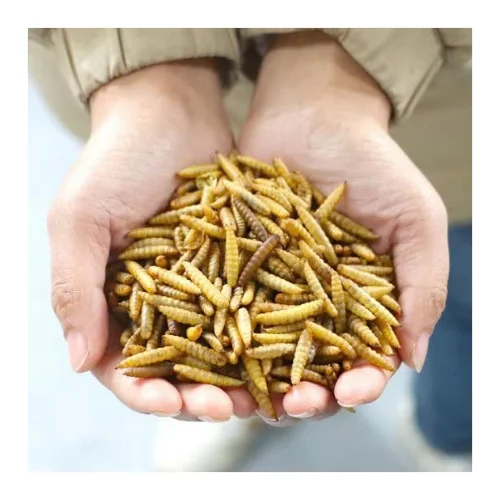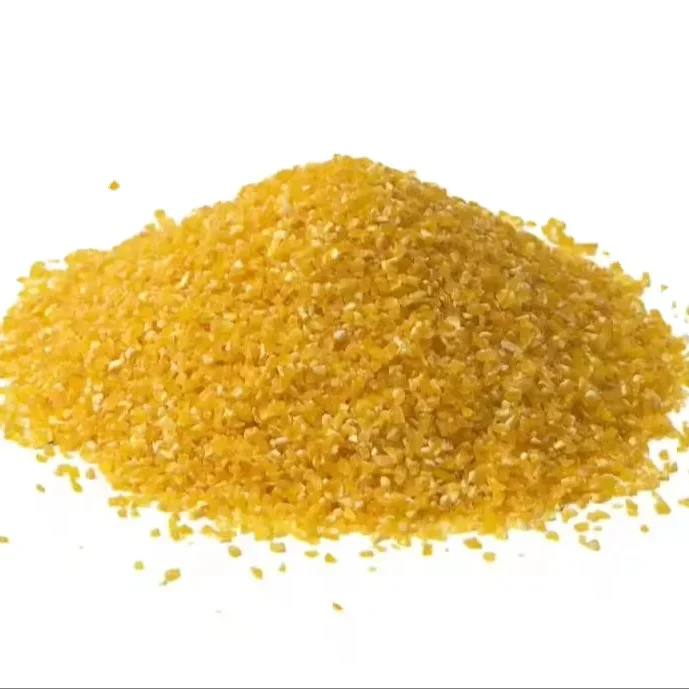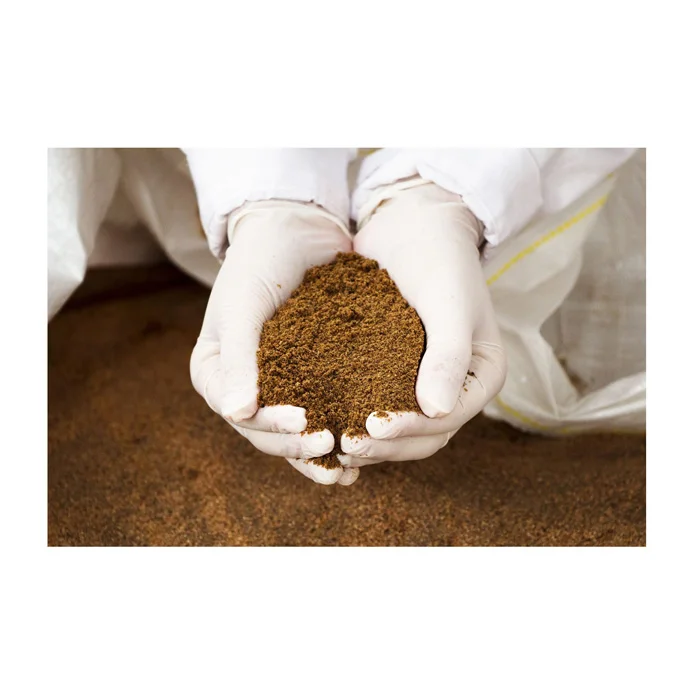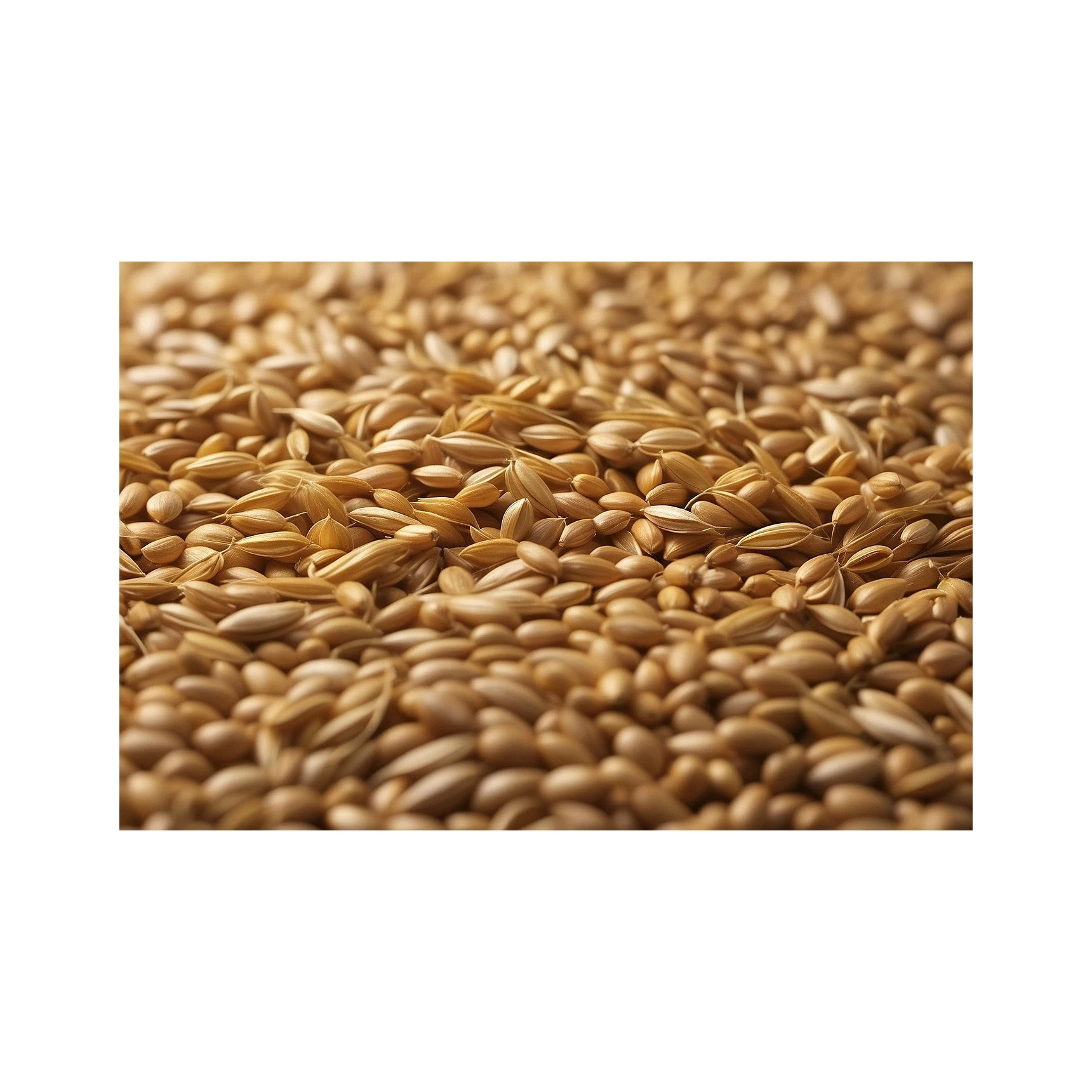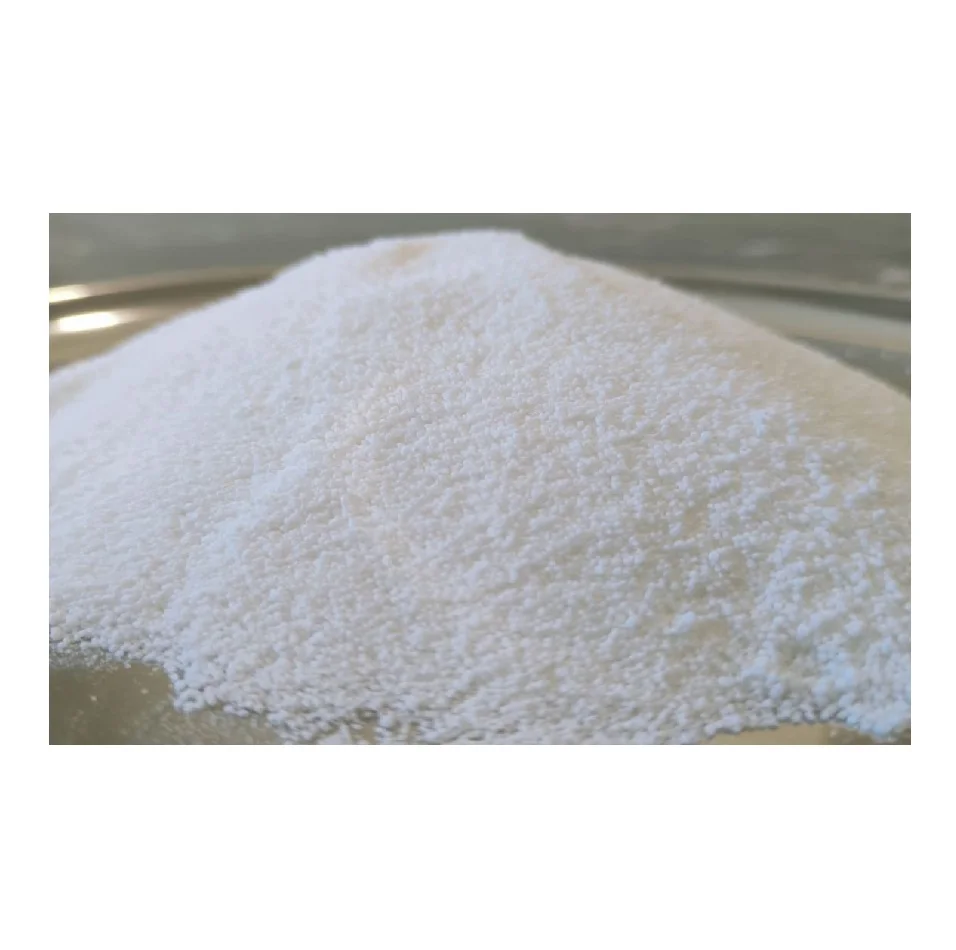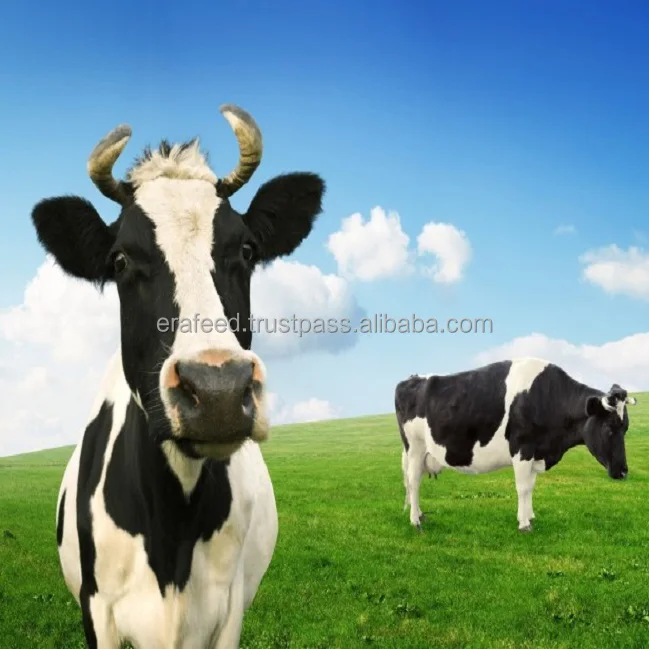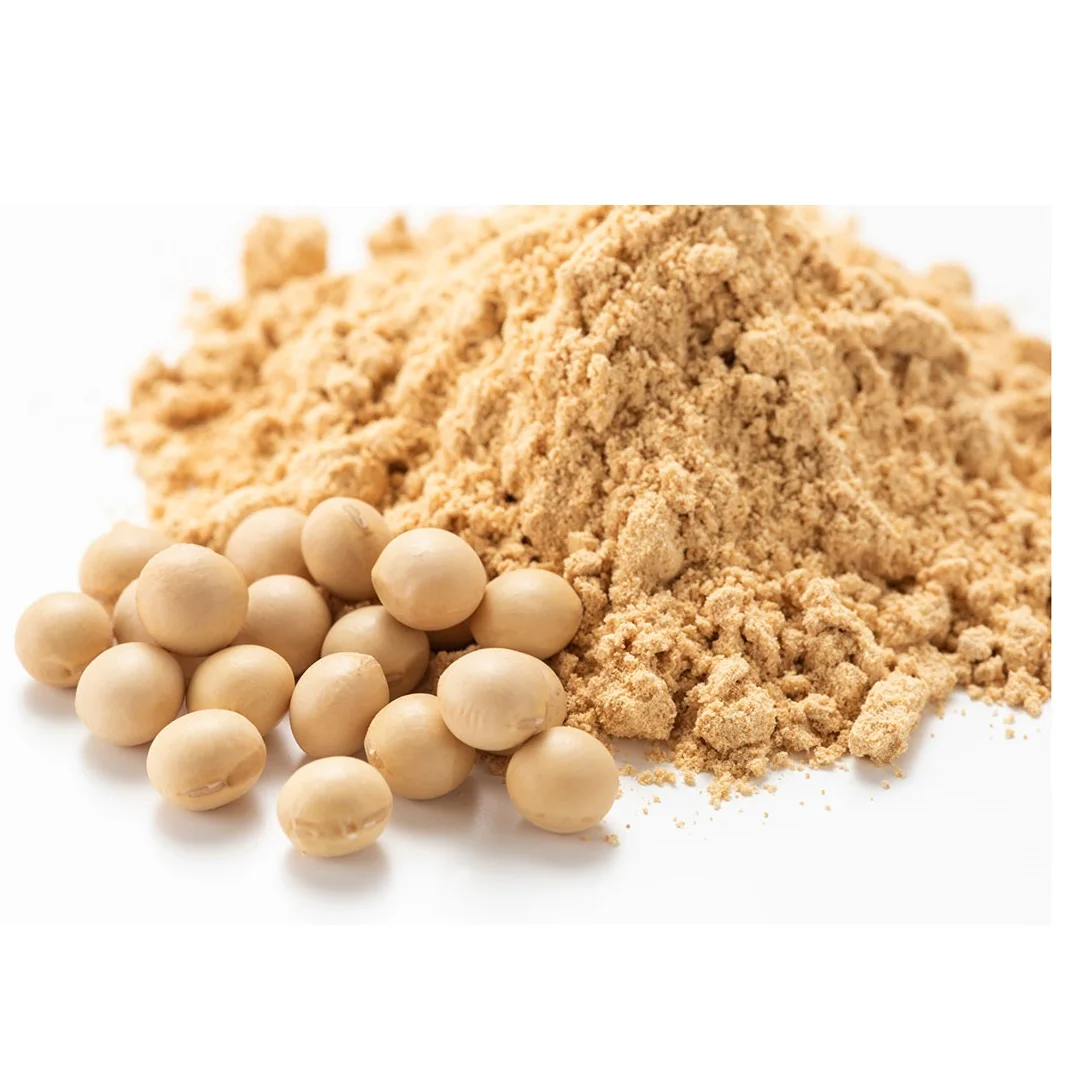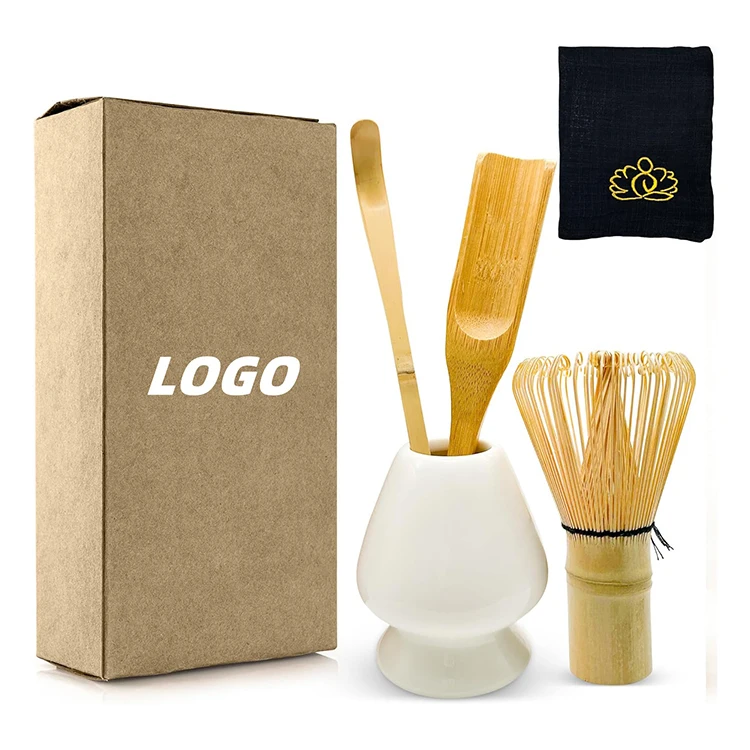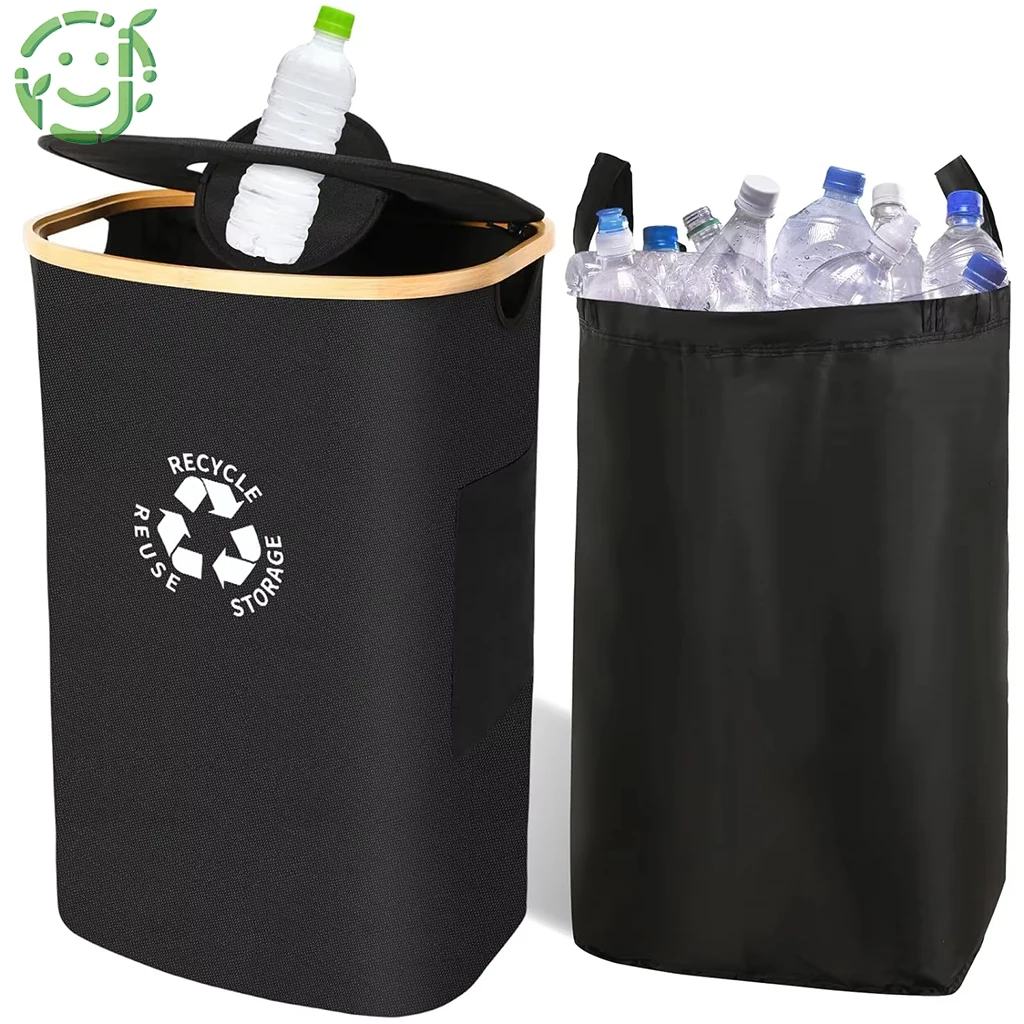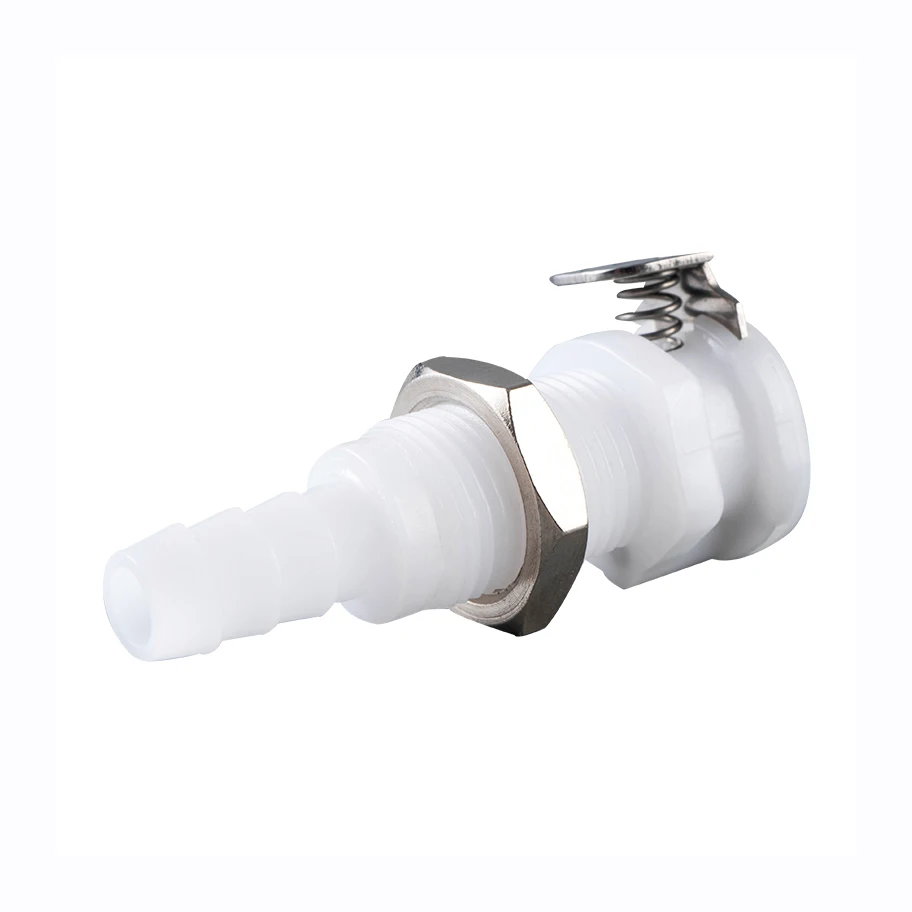Easy Feed Haylage Organic Haylage FiberMax Haylage Grass Haylage Blend
- Category: >>>
- Supplier: C.S. Traders
Share on (10000020263547):
Product Overview
Description
Products Description
Premium Haylage Blend is specially formulated from high-quality grasses and legumes, designed to provide optimal nutrition for ruminants. Fermented under controlled conditions, this haylage offers superior digestibility and palatability, making it an excellent forage option for dairy and beef cattle, sheep, and goats.
Key Features:
1. High Nutritional Value:
Rich in essential nutrients, including protein, fiber, vitamins, and minerals, ensuring balanced diets for livestock.
2. Enhanced Digestibility:
Fermentation process improves the digestibility of fiber, allowing for better nutrient absorption and improved animal
performance.
3. Palatable and Tasty:
Formulated to be highly palatable, encouraging feed intake and supporting healthy growth and milk production.
4. Consistent Quality:
Produced under stringent quality controls to ensure a uniform product with reliable nutrient composition.
5. Moisture Control:
Ideal moisture levels maintained during production to prevent spoilage while promoting optimal fermentation.
6. Convenient Packaging:
Available in easy-to-handle bales or bags for hassle-free storage and feeding.
7. Sustainable Sourcing:
Made from locally sourced grasses and legumes, supporting sustainable farming practices.
Usage Instructions:
* For Dairy Cattle:
Incorporate into the diet as a primary forage, typically making up 30-50% of the total ration. Pair with concentrates and
protein supplements to meet nutritional requirements.
* For Beef Cattle:
Use as a primary forage in finishing diets. Haylage can account for up to 70% of the diet, especially when combined with grains
to enhance energy intake.
* For Sheep and Goats:
Offer as a supplemental forage option to provide additional nutrients, particularly during the breeding and lactation periods.
* Feeding Strategy:
Introduce gradually to ensure livestock adjust to the new feed. Monitor feed intake and adjust the ration as needed to optimize
performance.
* Storage Recommendations:
Store in a cool, dry place, away from direct sunlight. Use within six months of opening to ensure freshness and maintain
nutritional quality.
1. High Nutritional Value:
Rich in essential nutrients, including protein, fiber, vitamins, and minerals, ensuring balanced diets for livestock.
2. Enhanced Digestibility:
Fermentation process improves the digestibility of fiber, allowing for better nutrient absorption and improved animal
performance.
3. Palatable and Tasty:
Formulated to be highly palatable, encouraging feed intake and supporting healthy growth and milk production.
4. Consistent Quality:
Produced under stringent quality controls to ensure a uniform product with reliable nutrient composition.
5. Moisture Control:
Ideal moisture levels maintained during production to prevent spoilage while promoting optimal fermentation.
6. Convenient Packaging:
Available in easy-to-handle bales or bags for hassle-free storage and feeding.
7. Sustainable Sourcing:
Made from locally sourced grasses and legumes, supporting sustainable farming practices.
Usage Instructions:
* For Dairy Cattle:
Incorporate into the diet as a primary forage, typically making up 30-50% of the total ration. Pair with concentrates and
protein supplements to meet nutritional requirements.
* For Beef Cattle:
Use as a primary forage in finishing diets. Haylage can account for up to 70% of the diet, especially when combined with grains
to enhance energy intake.
* For Sheep and Goats:
Offer as a supplemental forage option to provide additional nutrients, particularly during the breeding and lactation periods.
* Feeding Strategy:
Introduce gradually to ensure livestock adjust to the new feed. Monitor feed intake and adjust the ration as needed to optimize
performance.
* Storage Recommendations:
Store in a cool, dry place, away from direct sunlight. Use within six months of opening to ensure freshness and maintain
nutritional quality.

Specification
Flavor Profile of Haylage: | 1. Earthy and Grassy Notes: Haylage has a fresh, grassy flavor that is characteristic of the plant materials used, often providing a mild and pleasant aroma that appeals to livestock. 2. Slight Fermentation Tang: The fermentation process contributes a subtle tanginess, which can enhance palatability. Well-fermented haylage has a pleasant, slightly sweet aroma. 3. Sweetness from Plant Sugars: Natural sugars present in the grasses and legumes may give a sweet taste, further increasing its appeal to animals. 4. Variability: The flavor profile can vary depending on the types of grasses or legumes used, the harvesting time, and the fermentation process. Alfalfa haylage, for example, tends to be richer in flavor compared to grass-based haylage. |
Nutritional Profile of Haylage: | 1. Dry Matter (DM): Generally contains about 30-50% dry matter, depending on moisture content and fermentation quality. 2. Crude Protein (CP): Protein content typically ranges from 10-20% of DM, depending on the type of forage used. Legume-based haylage (like alfalfa) generally has higher protein levels than grass-based options. 3. Fiber Content: Contains significant amounts of neutral detergent fiber (NDF), generally ranging from 40-60% of DM, which is essential for maintaining healthy rumen function. 4. Energy Content: Energy levels (measured as net energy) can vary but are generally adequate for maintenance, growth, and milk production, particularly when complemented with other feeds. 5. Vitamins and Minerals: Provides a range of essential vitamins (such as A and E) and minerals (like calcium and phosphorus) necessary for animal health and performance. |
Storage of Haylage: | 1. Ideal Storage Conditions: * Temperature: Store haylage in a cool, dry area. Ideal storage temperatures are below 70°F (21°C) to prevent spoilage and fermentation issues. * Humidity: Maintain low humidity levels to minimize moisture accumulation, which can lead to mold growth and spoilage. * Ventilation: Ensure good airflow around the storage area to prevent moisture buildup and promote even drying if necessary. Proper ventilation also helps control temperature. 2. Types of Storage: * Bunkers: Bunkers should be well-sealed to prevent air exposure. Ensure that they are lined and covered properly to maintain anaerobic conditions. * Silage Bags: Use high-quality, UV-resistant plastic bags that provide an airtight seal. Ensure bags are filled and sealed correctly to minimize air pockets. * Silos: For upright or horizontal silos, ensure they are packed tightly to exclude air. Regularly monitor the face of the silo and remove silage in thin layers to avoid spoilage. * Bales: Store wrapped bales in a sheltered area, preferably on pallets to keep them off the ground and reduce moisture absorption. Cover them with tarps or in a shed if needed. 3. Monitoring: * Visual Inspections: Regularly check for signs of mold, spoilage, or excessive moisture. Discard any spoiled haylage immediately to prevent contamination of the rest. * Temperature Monitoring: Use a temperature probe to monitor the internal temperature of stored haylage, especially in bunkers and silos. A sudden rise in temperature can indicate spoilage. 4. Handling Practices: * Minimize Air Exposure: When accessing stored haylage, limit air exposure by cutting from the face or top and re-covering promptly to maintain anaerobic conditions. * Avoid Contamination: Use clean equipment and tools when handling haylage to prevent introducing contaminants. Ensure animals do not have direct access to storage areas to avoid spoilage. 5. Shelf Life: * Optimal Use Period: When stored properly, haylage can last for 6-12 months after opening, depending on the type and conditions. Check for quality regularly, especially if stored for longer periods. |
Usage of Haylage: | 1. For Dairy Cattle: * Incorporate as a primary forage, making up 30-50% of the total ration. * Pair with protein concentrates to ensure adequate nutrient intake for milk production. 2. For Beef Cattle: * Used as a primary forage in finishing diets, comprising up to 70% of the diet. * Often combined with grains for higher energy content to promote rapid weight gain. 3. For Sheep and Goats: * Can be used as a supplemental forage, particularly beneficial during breeding and lactation. * Typically comprises 20-40% of the total diet, depending on the availability of other forages. 4. For Youngstock and Heifers: * Provides balanced nutrition, aiding in growth and development when supplemented with protein sources. * Should make up about 30-50% of their diet, adjusted for specific nutritional needs. 5. Storage and Feeding: * Store haylage in a cool, dry area and feed within 6-12 months of opening to ensure quality. * Introduce gradually to prevent digestive upset and monitor animal intake to adjust rations as needed. |
Product packaging


To better ensure the safety of your goods, professional, environmentally friendly, convenient and efficient packaging services will be provided.
Company Profile












C.S. Traders: Bridging the Gap Between India's Finest Products and Global Markets
C.S. Traders is a premier export firm based in Uttar Pradesh, India, dedicated to delivering the highest quality products from India to international markets. Founded by the visionary Mr. Karan Kumar, the company has established itself as a reliable and customer-focused exporter, promising to meet and exceed customer expectations across the globe.
Leadership and Vision
The company is led by a dynamic leadership team that includes Chief Executive Officer Mr. Sameer Vats and Chief Operating Officer Mr. Sonu Kumar. Their combined expertise and commitment to excellence have been pivotal in positioning C.S. Traders as a leader in the export industry. The leadership team’s strategic vision focuses on sustainable growth, innovation, and customer satisfaction, ensuring that C.S. Traders remains at the forefront of the global trade market.
Product Range
C.S. Traders boasts an extensive range of products, catering to diverse industries and markets. The company's portfolio includes:
1. Agricultural Products: C.S. Traders is renowned for exporting top-quality agricultural produce. The range includes staples such as wheat, rice, and other cereals, which are sourced from the best farms across India. The company also exports a variety of oils, including sunflower oil, palm oil, and soybean oil, ensuring that customers receive the purest and most nutritious options.
2. Animal Products: The firm deals in a variety of animal products, including fish, meat, and chicken. By maintaining stringent quality control measures, C.S. Traders ensures that all animal products are fresh, safe, and of the highest standard.
3. Pharmaceuticals: C.S. Traders exports a wide range of medicines, ensuring that global markets have access to essential and life-saving drugs. The company collaborates with reputed pharmaceutical manufacturers to provide high-quality and affordable medicines to international customers.
4. Textiles and Handicrafts: India is known for its rich textile heritage and exquisite handicrafts. C.S. Traders exports a
diverse array of textiles, including cotton, jute, and leather products, along with beautiful handicrafts that showcase India’s
artisanal excellence.
5. Industrial Goods: The company also deals in various industrial goods such as plastics, catering to the needs of different
sectors. By offering a broad spectrum of products, C.S. Traders ensures that it can meet the demands of any industry.
Customer-Centric Approach
At the core of C.S. Traders’ operations is a commitment to fulfilling every customer demand. The company’s customer-centric approach ensures that all orders, regardless of size, are handled with the utmost care and precision. By maintaining strong relationships with suppliers and customers, C.S. Traders can offer customized solutions tailored to meet specific requirements.
Quality Assurance
Quality is a non-negotiable aspect of C.S. Traders’ business model. The company adheres to rigorous quality control protocols to ensure that every product exported meets international standards. From sourcing to packaging and shipping, every step of the process is meticulously monitored to guarantee the highest quality.
Sustainability and Ethical Practices
C.S. Traders is dedicated to sustainable and ethical business practices. The company works closely with suppliers who share its commitment to environmental and social responsibility. By promoting sustainable farming, fair trade practices, and eco-friendly packaging, C.S. Traders aims to minimize its environmental footprint while supporting local communities.
Global Reach
With a robust distribution network, C.S. Traders has established a strong presence in international markets. The company’s efficient logistics and supply chain management ensure timely delivery and customer satisfaction across the globe.
In conclusion, C.S. Traders is more than just an export company; it is a bridge that connects India’s rich and diverse offerings with the world. Under the leadership of Mr. Karan Kumar, Mr. Sameer Vats, and Mr. Sonu Kumar, the company continues to thrive, driven by a passion for excellence and a commitment to customer satisfaction. Whether it's agricultural produce, pharmaceuticals, textiles, or industrial goods, C.S. Traders promises to deliver the best, fulfilling every customer's demand with precision and care.
C.S. Traders is a premier export firm based in Uttar Pradesh, India, dedicated to delivering the highest quality products from India to international markets. Founded by the visionary Mr. Karan Kumar, the company has established itself as a reliable and customer-focused exporter, promising to meet and exceed customer expectations across the globe.
Leadership and Vision
The company is led by a dynamic leadership team that includes Chief Executive Officer Mr. Sameer Vats and Chief Operating Officer Mr. Sonu Kumar. Their combined expertise and commitment to excellence have been pivotal in positioning C.S. Traders as a leader in the export industry. The leadership team’s strategic vision focuses on sustainable growth, innovation, and customer satisfaction, ensuring that C.S. Traders remains at the forefront of the global trade market.
Product Range
C.S. Traders boasts an extensive range of products, catering to diverse industries and markets. The company's portfolio includes:
1. Agricultural Products: C.S. Traders is renowned for exporting top-quality agricultural produce. The range includes staples such as wheat, rice, and other cereals, which are sourced from the best farms across India. The company also exports a variety of oils, including sunflower oil, palm oil, and soybean oil, ensuring that customers receive the purest and most nutritious options.
2. Animal Products: The firm deals in a variety of animal products, including fish, meat, and chicken. By maintaining stringent quality control measures, C.S. Traders ensures that all animal products are fresh, safe, and of the highest standard.
3. Pharmaceuticals: C.S. Traders exports a wide range of medicines, ensuring that global markets have access to essential and life-saving drugs. The company collaborates with reputed pharmaceutical manufacturers to provide high-quality and affordable medicines to international customers.
4. Textiles and Handicrafts: India is known for its rich textile heritage and exquisite handicrafts. C.S. Traders exports a
diverse array of textiles, including cotton, jute, and leather products, along with beautiful handicrafts that showcase India’s
artisanal excellence.
5. Industrial Goods: The company also deals in various industrial goods such as plastics, catering to the needs of different
sectors. By offering a broad spectrum of products, C.S. Traders ensures that it can meet the demands of any industry.
Customer-Centric Approach
At the core of C.S. Traders’ operations is a commitment to fulfilling every customer demand. The company’s customer-centric approach ensures that all orders, regardless of size, are handled with the utmost care and precision. By maintaining strong relationships with suppliers and customers, C.S. Traders can offer customized solutions tailored to meet specific requirements.
Quality Assurance
Quality is a non-negotiable aspect of C.S. Traders’ business model. The company adheres to rigorous quality control protocols to ensure that every product exported meets international standards. From sourcing to packaging and shipping, every step of the process is meticulously monitored to guarantee the highest quality.
Sustainability and Ethical Practices
C.S. Traders is dedicated to sustainable and ethical business practices. The company works closely with suppliers who share its commitment to environmental and social responsibility. By promoting sustainable farming, fair trade practices, and eco-friendly packaging, C.S. Traders aims to minimize its environmental footprint while supporting local communities.
Global Reach
With a robust distribution network, C.S. Traders has established a strong presence in international markets. The company’s efficient logistics and supply chain management ensure timely delivery and customer satisfaction across the globe.
In conclusion, C.S. Traders is more than just an export company; it is a bridge that connects India’s rich and diverse offerings with the world. Under the leadership of Mr. Karan Kumar, Mr. Sameer Vats, and Mr. Sonu Kumar, the company continues to thrive, driven by a passion for excellence and a commitment to customer satisfaction. Whether it's agricultural produce, pharmaceuticals, textiles, or industrial goods, C.S. Traders promises to deliver the best, fulfilling every customer's demand with precision and care.
FAQ
1. What is haylage?
Haylage is a type of forage made from freshly cut grass or legumes that is fermented and stored in anaerobic conditions to preserve its nutritional value. It is commonly used as livestock feed.
Haylage is a type of forage made from freshly cut grass or legumes that is fermented and stored in anaerobic conditions to preserve its nutritional value. It is commonly used as livestock feed.
2. How is haylage different from silage?
* Haylage is made from grass or legumes and typically has a higher dry matter content (30-50%) than silage.
* Silage is usually made from corn or other crops and has a lower dry matter content, often around 25-35%.
3. What are the benefits of feeding haylage to livestock?
Haylage is nutrient-rich, high in digestible fiber, and palatable, making it an excellent forage option for dairy and beef cattle.
It supports rumen health, enhances feed efficiency, and can improve milk production and weight gain.
* Haylage is made from grass or legumes and typically has a higher dry matter content (30-50%) than silage.
* Silage is usually made from corn or other crops and has a lower dry matter content, often around 25-35%.
3. What are the benefits of feeding haylage to livestock?
Haylage is nutrient-rich, high in digestible fiber, and palatable, making it an excellent forage option for dairy and beef cattle.
It supports rumen health, enhances feed efficiency, and can improve milk production and weight gain.
4. What is the ideal moisture content for haylage?
The ideal moisture content for haylage is between 40-60%. This range ensures proper fermentation while minimizing spoilage risks.
The ideal moisture content for haylage is between 40-60%. This range ensures proper fermentation while minimizing spoilage risks.
5. How should haylage be stored?
Store haylage in a cool, dry place with good ventilation. Use airtight containers (like silos or bags) to maintain anaerobic
conditions and prevent spoilage. Regularly monitor for signs of mold or spoilage.
Store haylage in a cool, dry place with good ventilation. Use airtight containers (like silos or bags) to maintain anaerobic
conditions and prevent spoilage. Regularly monitor for signs of mold or spoilage.
6. How long can haylage be stored?
When stored properly, haylage can last for 6-12 months after opening. It's important to check for quality regularly, especially if stored for longer periods.
When stored properly, haylage can last for 6-12 months after opening. It's important to check for quality regularly, especially if stored for longer periods.
7. Can haylage be fed to all types of livestock?
Yes, haylage is suitable for ruminants like dairy cattle, beef cattle, sheep, and goats. However, it should be supplemented with other feeds to meet specific nutritional requirements.
Yes, haylage is suitable for ruminants like dairy cattle, beef cattle, sheep, and goats. However, it should be supplemented with other feeds to meet specific nutritional requirements.
8. How do I introduce haylage into my livestock's diet?
Introduce haylage gradually to allow livestock to adjust to the new feed. Start with small amounts mixed with their regular feed, and monitor intake.
Introduce haylage gradually to allow livestock to adjust to the new feed. Start with small amounts mixed with their regular feed, and monitor intake.
9. What should I look for when choosing haylage?
Look for haylage that is:
* Green in color with a fresh smell.
* Free from mold or spoilage.
Look for haylage that is:
* Green in color with a fresh smell.
* Free from mold or spoilage.
* Consistent in texture and moisture content.
* High in protein and fiber, depending on the needs of your livestock.
10. Can haylage be used as a sole feed?
While haylage can be a major component of a livestock diet, it is generally recommended to combine it with other feeds (like grains or protein supplements) to ensure a balanced nutritional intake.
* High in protein and fiber, depending on the needs of your livestock.
10. Can haylage be used as a sole feed?
While haylage can be a major component of a livestock diet, it is generally recommended to combine it with other feeds (like grains or protein supplements) to ensure a balanced nutritional intake.
We Recommend
New Arrivals
New products from manufacturers at wholesale prices
